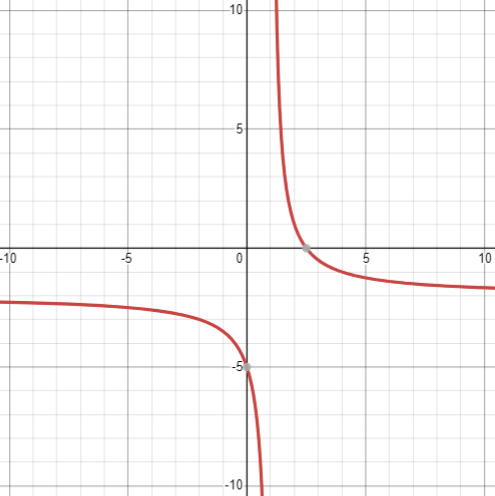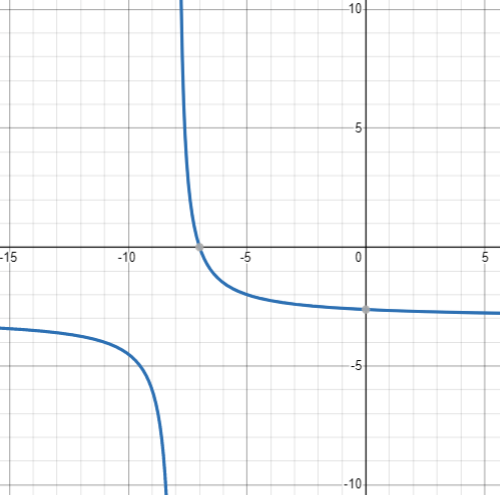Simplify the rational expression.
(x^2+5x-14)/(x^2-4x+4)
(x+7)/(x-2)
What is the equation of the vertical asymptote?
f(x)=1/(x-3) +2
x=3
1/2 * 3/8
3/16
1/2-3/8
1/8
Simplify the rational expression.
(x^2-9x+14)/(x^2-5x-14)
(x-2)/(x+2)
What is the equation of the horizontal asymptote?
f(x)=4/(x+2)-1
y=-1
Multiply and simplify:
(6x^2-18x)/(x^2-10x+21) * (x^2-14x+49)/(3x^2)
(2(x-7))/x
Add the expressions and simplify.
12/(5x)+7/(6x)
107/(30x)
Write as an equivalent expression:
f(x) =(x^2+3x+5)/(x-1)
x+4 +9/(x-1)
Give the x and y intercepts for
f(x) = (x+4)/((x-3)(x+5)
(-4,0) and (-4/15)
Divide and simplify.
(5x^2y^3)/(x^7) div (30xy^4)/(y^3)
y^2/(6x^6)
Find the Least Common Multiple (LCM):
10x^2-15x
5x^3
5x^2(2x-3)
Simplify the rational expression.
(2x^2+2x-4)/(x^2-5x-14)
(2(x-1))/(x-7)
f(x)=3/(x-1)-2
a) Graph the function.
b) State the domain and range.
 domain:
domain:
x!=1
range:
y!=-2
Multiply and simplify.
(x-3)/(2x-8) * (6x^2-96)/(x^2-9)
(3(x+4))/(x+3)
Add the expressions and simplify.
x/(x^2-x-12) + 5/(12x-48)
(17x+15)/(12(x-4)(x+3)
Simplify the rational expression.
(8x^2+10x-3)/(6x^2+13x+6)
(4x-1)/(3x+2)
a) Find both the horizontal and vertical asymptotes.
b) Graph the function.
f(x)=3/(x+8)-3

horizontal asymptote: y=-3
vertical asymptote: x=-8
Divide and simplify.
(3x+27)/(6x-48) div (x^2+9x)/(x^2-4x-32)
(x+4)/(2x)
Subtract the expressions and simplify.
(x^2-5)/(x^2+5x-14) - (x+3)/(x+7)
(-x+1)/((x+7)(x-2)